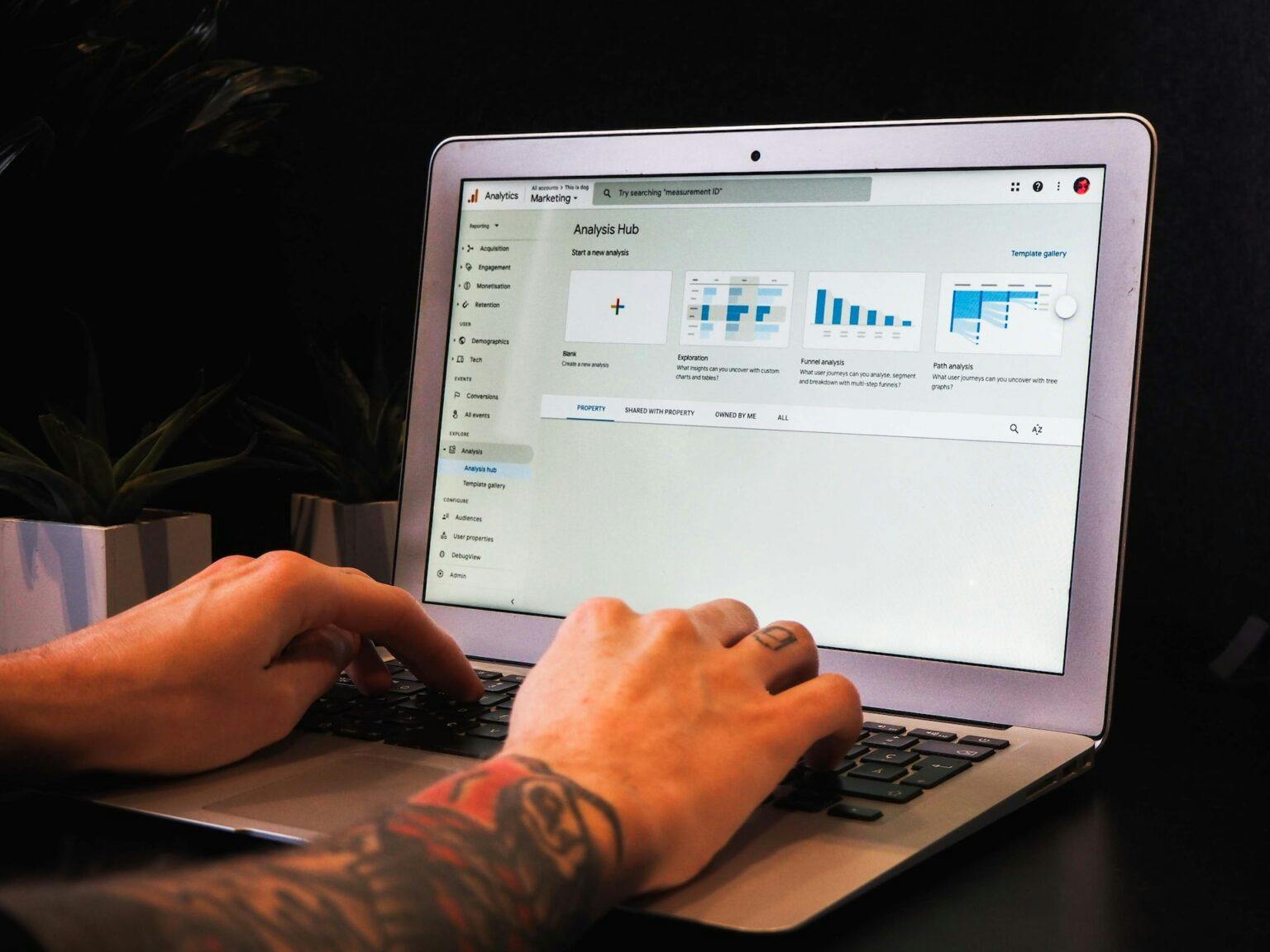Which Goals are Available in Google Analytics?
Published 2023-02-06T06:00:00 by Yuza Taddeo
Among the most important aspects of creating and implementing an internet marketing campaign involves measuring the final results. By identifying how well your marketing performed, you’ll be able to effectively determine if your campaign was successful and if any changes need to be made. Without this information, you could continue sending out marketing materials that don’t gain any traction with your target audience.
The information you garner when measuring marketing campaign results can be used to make more informed decisions in the future. Keep in mind, however, that Google Analytics and other tracking platforms provide users with the means of tracking many different metrics. While most of these metrics are useful, it’s impossible to track all of them at the same time. In this scenario, setting goals can be helpful.
Identifying your site’s current goals and objectives allows you to turn these goals into actions that should help you track performance and determine if your site is doing well. When using the Google Analytics platform, you’ll discover that there are numerous goals you’re able to set. This guide offers a more in-depth overview of the types of goals that are available with Google Analytics and which ones you should track.

What is Google Analytics?
Google analytics is a type of web analytics tool that provides you with answers to questions pertaining to your traffic, website, and online presence. This tool uses page tags to collect data from every visitor who enters your website. These tags can be added to the code on every site page. You can then obtain customizable reports based on the data that was obtained while the tags monitored your website. You’ll be able to view website traffic, page views, session details, and average session length.
The types of features and capabilities available through Google Analytics include everything from data gathering and tracking to visualization and reporting. Some of the data monitoring and visualization features available with Google Analytics include scorecards, activity charts, and dashboards.
Google Analytics will show you areas and pages on your website that need improvement. The necessary improvements could involve everything from the site’s technical aspects to the content you place on each page. As mentioned previously, the information you gather will also help you determine how effective your marketing campaigns have been, which should allow you to more effectively use your marketing budget.
What are Goals in Google Analytics?
Google Analytics provides users with the opportunity to track and obtain reports on different goals that might be important to their company’s brand. These goals allow you to track the rate at which visitors take certain actions on your website. They can include everything from completing and submitting a form to visiting a site page.
Before you’re able to set effective goals, you should first identify the types of actions you would like site visitors to take. Do you want visitors to make a purchase or request a quote? Nearly every goal you have can be tracked with Google Analytics. The goal settings available with this tool can be reached by selecting the “Admin” tab, after which you can click “Goals”.
In the event that you’ve already set up goals on your website, they can be viewed in this area. You also have the option to create and configure new goals from here. The four types of goals that you can make in Google Analytics include event, duration, pages per session, and destination. In the event that you use the Google Ads tool, you should also be able to view Smart Goals that allow you to track any qualified visitors who enter your website via pay-per-click ads.
If you want track goals that are more important to your company, you should first identify which types of goals pair well with the things you want to measure. Many users track several different types of goals when measuring the performance of their marketing campaigns.

How Do You Set Up Goals in Google Analytics?
Setting up goals in Google Analytics is simple and straightforward. First, log in to Google Analytics, which will take you to the dashboard. From here, select the “Admin” button that’s positioned around the bottom-left area of the screen. You can now click on “Goals”. When you want to create a new goal, click the “+Goal” button to set it up.
There are several tips you should consider when making goals in Google Analytics. For one, make sure that the name you give to the goal is descriptive enough for you to recognize it later on. This name will show up in most areas throughout Google Analytics, which is why it must be clear and descriptive. If you need to routinely go back to check what the goal is referring to, you’ll be wasting time. If you’ve set up numerous goals, having unclear goal names can be an issue.
Make sure that you also think ahead as you set up your goals. Google Analytics doesn’t give you the ability to delete goals since they are permanently applied when data is compiled for Google Analytics reports. Even though you can’t permanently delete any goal, it’s possible to deactivate them. Before you begin tracking a goal, it’s highly recommended that you understand everything about the goal you want to track.
The 4 Goals in Google Analytics
There are four distinct goal types that can be tracked with Google Analytics, which extend to URL destinations, visit duration, pages per session, and events. The ones you choose to track depend on what you want to learn about your website’s performance.

1. URL Destinations
Among the most commonly used goals involves URL destinations, which will help you keep track of certain URLs and let you know whenever someone visits an URL associated with your website. These visits will trigger the goal. Keep in mind that it doesn’t necessarily matter how the user reached your website. Whether a user typed in your URL or clicked on an ad that brought them to your website, Google Analytics views these actions as part of the goal.
URL destination goals are ideal for confirmation pages, sales, downloads, and thank-you pages. Let’s say that individuals are taken to thank-you pages following the completion of a transaction. By measuring the number of people who saw the thank-you page, you can identify how many people made a purchase from you.
It’s essential that you keep this URL hidden to avoid anyone else accessing it. The only way for someone to reach a thank-you page should be by purchasing a product, which should allow you to receive 100% precise tracking.
2. Visit Duration
Goals pertaining to visit duration are designed to track the number of people who remained on your website for a set period of time. If you want to increase site engagement and improve how long users remain on your site, you should track this goal. If you discover that users only stay on a specific page for a small period of time, it’s possible that the page design or content is unappealing.
There are two ways that you can use this type of goal. Let’s say that you want users to remain on your website for at least four minutes. You can use the information you gather to identify the total number of visitors who stayed on the site for over three minutes or the number of visitors who spent less than three minutes on the site.
When setting up this goal, make sure that you choose a duration that only a portion of visitors will spend on your website as they browse it. If the duration is so short that nearly everyone meets this goal, there’s no value to tracking it.
3. Pages/Screens per Session
You can also focus on tracking the number of pages that visitors browse through before they navigate to another website. If you’re looking to keep visitors engaged long enough to make a purchase or create a membership, tracking this goal can be helpful.
4. Events
Despite how advantageous it can be to track events, this type of goal is more complex than all three of the other goal types mentioned above. First, you’ll need to set up events before you can set goals. Once these events have been created, you can select one as a goal.
If you need to set up events, you might be tasked with adding JavaScript code to the exact elements that you’re looking to track, which can involve downloads, button clicks, or playing a video. Whenever users interact with this element, you can track it to measure event goals. Events can be effectively customized to track any set of data.
Why Tracking Goals in Google Analytics is Crucial for Businesses
Tracking goals can be highly beneficial for any business. These goals provide you with the ability to track the things that matter the most to your ongoing success, which include everything from downloads and leads to demos and sales.

Once you obtain information about how well your website allows you to reach your goals, you’ll gain a better understanding of your target audience and what they want from a website. The information you gather is actionable, which means that it can be used to further improve your website and the content within.
Subscribe to our newsletter



